Leather boots are one of the few items of clothing undeniably synonymous with raw denim. Thoughtful construction, natural materials, a century old aesthetic and the fact that boots are equal parts fashionable and functional pave the way for the average denim head and his lasted cowhide to be joint at the cuff.
And as is the case in the denim industry, often times it’s easy to get lost in the whirlwind of terminology. That’s where we come in. Whether to simply outsmart your forum buddies, improve that first date banter (If she lets you talk chromexcel all night, she could be the one), or legitimately find the perfect pair to meet your needs, take heed of our comprehensive breakdown of the footwear industry’s most commonly used welts.
THE GOODYEAR WELT
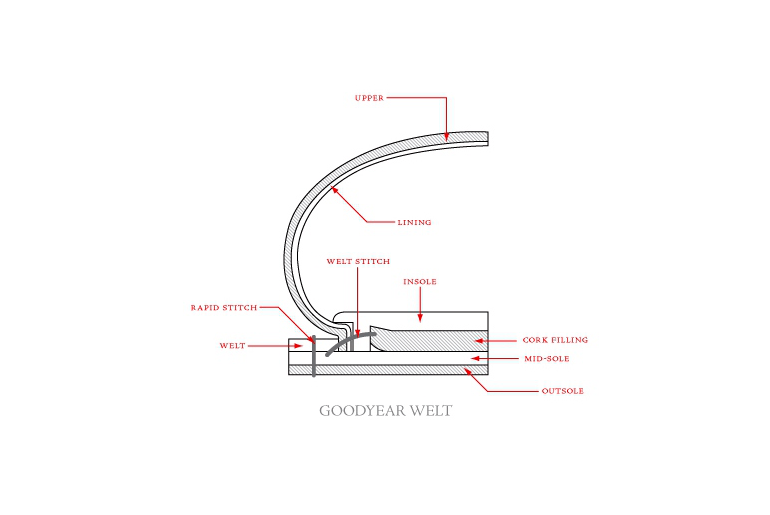
Image courtesy: mydenimlife.com
Due to its longstanding heritage, little-needed-maintenance, waterproof durability and clean aesthetic, theGoodyear welt is arguably the most prolific construction method within the leather footwear industry. The goodyear welt takes its name from Charles Goodyear Jr., an American inventor who automated the previously hand made welting process in 1869. This very same method is still used by cobblers around the world today.
The first step in constructing a goodyear welt is to stretch the upper over a lastand bring it together with the insole,mid-sole, and welt using what we call a welt-stitch; one of two elements in the goodyear welt, along with the (rapid stitch) that holds the entire operation together. From there, in a relatively simple last step, the welt is cemented and rapid stitched to the both the mid and outsoles.
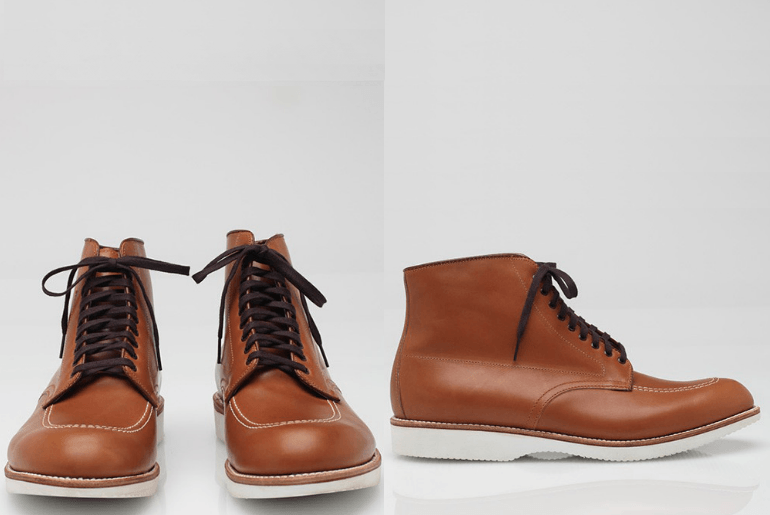
Alden x Need Supply Indy Boot showing the Goodyear welt
Some of the more well known goodyear welted shoe models are the Red Wing 877, 875 and the Wolverine 1000 Mile boots. New England based shoe manufacturer Alden also offers the majority of their Indy Boot line up in either a Goodyear or Storm welt.
THE STORM WELT
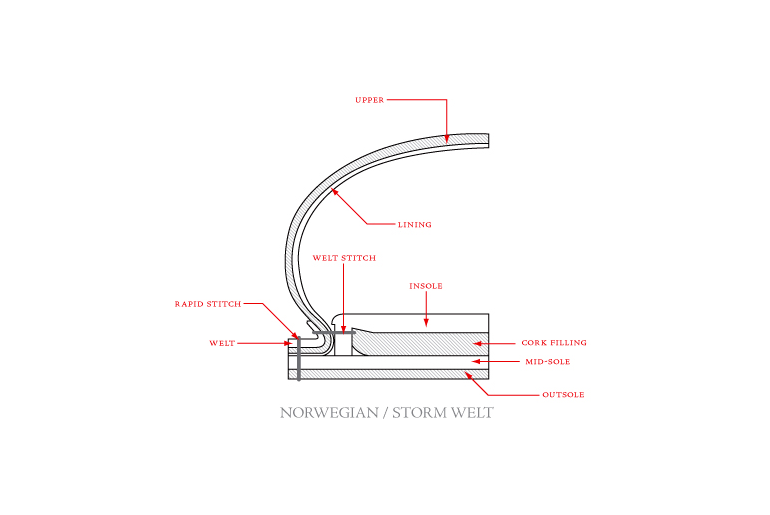
Image courtesy: mydenimlife.com
The Storm welt is closely related to the Goodyear in the fact that each method uses the same components, differing only in form. Storm welt construction uses a welt similar to that of a goodyear constructed boot but wider. The extra width allows the welt to be bent upwards, creating a seal around the junction between the upper and the mid-sole. Aptly named, the Storm welt is generally considered to offer greater moisture protection than a Goodyear welt.
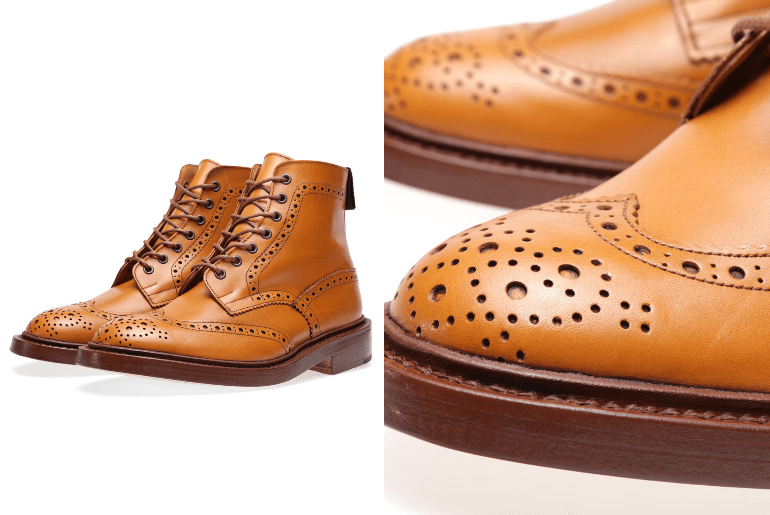
Tricker’s storm welt
Tricker’s and Alden are two of the most prominent users of the Storm welt within today’s footwear industry.
Blake Construction
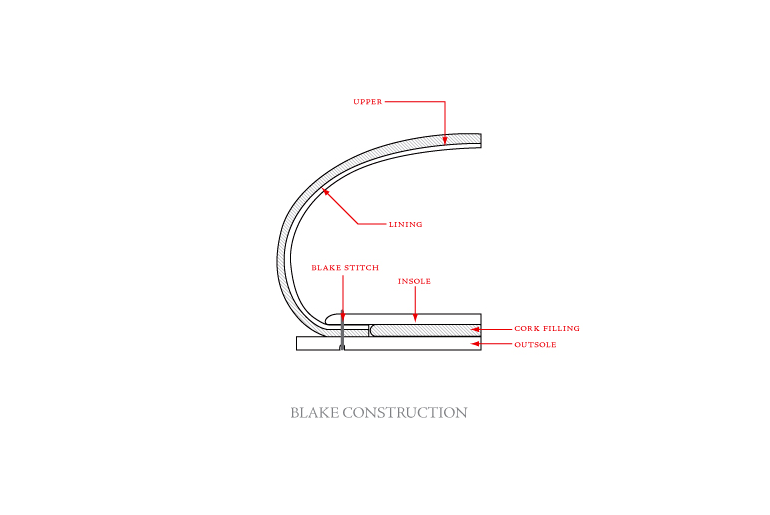
Image courtesy: mydenimlife.com
Blake construction, in terms of both structure and aesthetic, is a little more removed than that of the previous goodyear and storm welts. In fact, a shoe made using Blake construction goes without a welt altogether. It simply uses a single channelled stitch running straight from the outsole through to the interior to hold the different elements of the shoe together. Some modern shoemakers tend to slip a lining within the shoe to hide the blake stitch from a bird’s eye view, however the more traditional method was to leave the blake stitch visible; often causing discomfort to some wearers.
Blake construction has become less common in hard wearing boots due to the tendency for moisture to wick it’s way through the blake stitch and into the shoe under heavy weather conditions. However a benefit of the Blake stitch, and one of the main reasons why the method still gets used today, is the low, and more elegant, profile that shoemakers can achieve due to the omission of the traditional welt and midsole.
One bootmaker that still uses the blake construction method is Rancourt & Co. from Lewiston, Maine. A personal favorite is Rancourt’s Blake Boot in olive chromexcel.
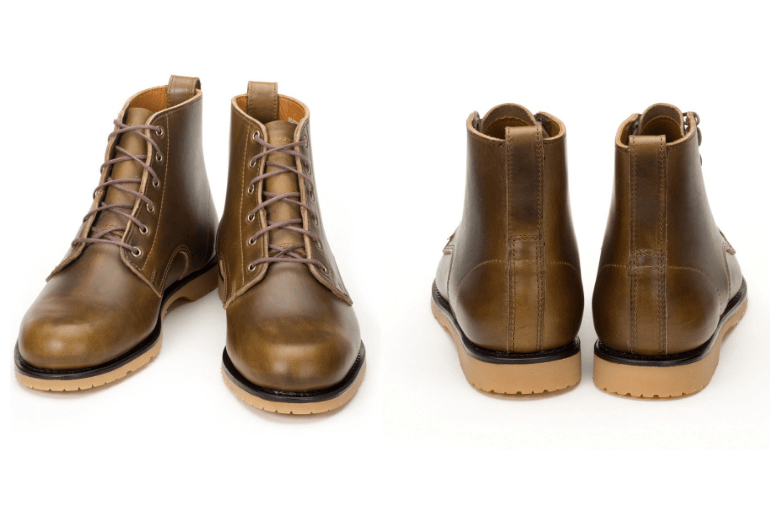


No comments:
Post a Comment